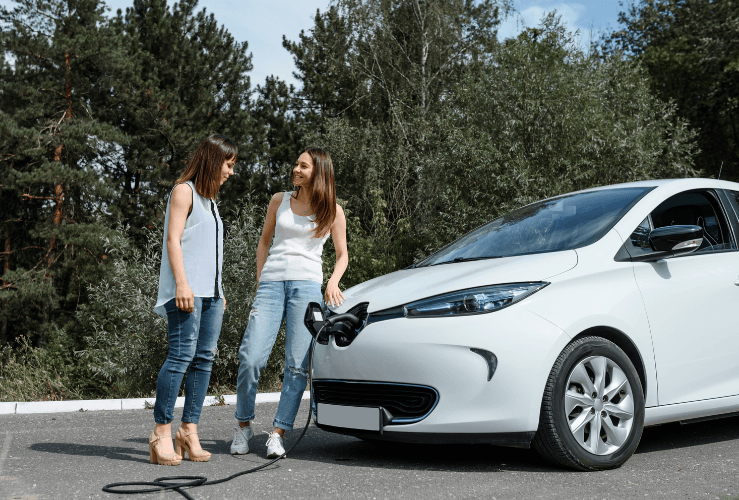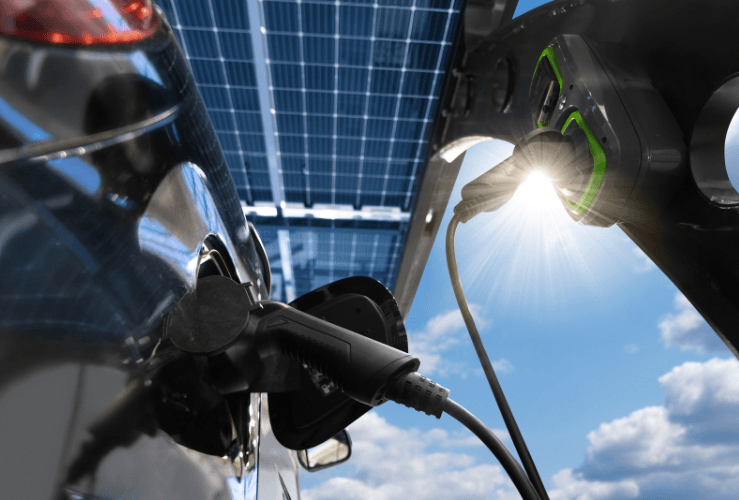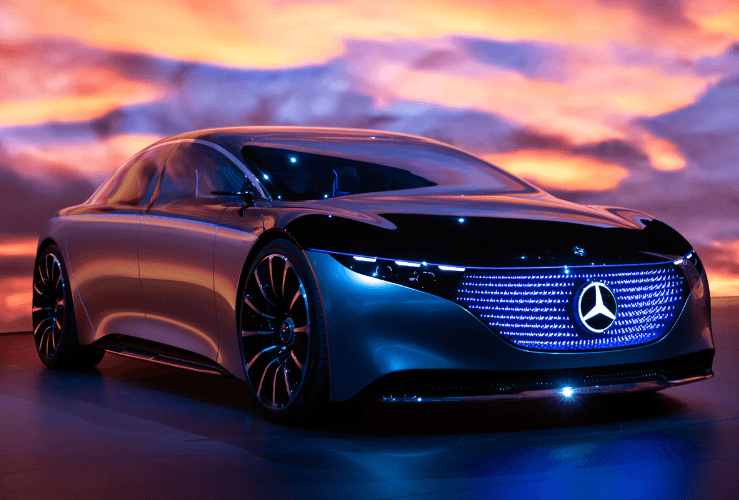The process for performing a breakdown recovery on an electric vehicle differs from that of a petrol or diesel car.
Learn about these differences, and about the different repair costs.
With both EV and ICE breakdowns, the objective of the recovery service provider is to identify the cause of the breakdown, then, if possible, undertake a repair at the scene so the customer can go on their way.
If a solution is not found by the roadside, the vehicle may be towed to a particular location (e.g. garage or chargepoint), to resolve the problem.

EV breakdown safety considerations
However, attending an EV breakdown differs from an ICE breakdown in some important ways.
Because EVs use high voltage lithium-ion batteries, they must be dealt with carefully.
The recovery provider will perform a dynamic risk assessment on the vehicle.
The EV must be switched off and keys must be kept a safe distance to prevent the engine being accidentally turned on (or they must be kept in a key signal blocking pouch).
Thermal runaway risk
Crucially, the agent must make thermal checks to determine if there is any risk of ‘thermal runaway’ - when there is an uncontrolled reaction in the lithium-ion battery.
If thermal runaway is identified, there is a risk of fire or explosion, and the emergency services must be called.
Thankfully, the likelihood of an EV catching fire is very low. A study by one US-based insurer revealed that just 25.1 out of every 100,000 electric vehicles sold caught fire - a much lower figure than for ICE vehicles.
EV charging by the roadside
Running out of charge is a common EV breakdown cause.
Some recovery operators have charging devices that can give the EV enough charge to get moving again. However, these can be slow and may only offer enough charge for a relatively short distance (although this may be sufficient to reach a garage, chargepoint or home address/destination).

Towing with a flatbed
The EV may need to be taken to either a garage for repair, or to a chargepoint - if it has run out of charge.
However, electric vehicles may sustain damage if they are ‘flat towed’ due to the nature of their mechanics, which is why most are placed on a flatbed truck and taken to the appropriate location.
While some EVs have a ‘neutral’ mode which should allow safe towing, manufacturers usually recommend that a flatbed is used to remove the vehicle.
Conversely, the majority of ICE vehicles can be flat-towed in the normal way without any risk of damaging the mechanics.
EV vs ICE repair costs
A new study has revealed that electric vehicle breakdowns cost significantly more than petrol or diesel recoveries.
Fleet management firm Total Motion found the average ICE (internal combustion engine) breakdown costs £221, compared to £596 for an EV (excluding accidents).
Plug-in vehicles also broke down more frequently, according to the study - with 3.1 incidents compared to 1.9 for ICE vehicles.
On the plus side, EVs cost 27% less in terms of service, maintenance and repair (SMR), the research found.
The Total Motion research analysed 2,500 EVs over four and a half years.
More details on EV repair costs
While EVs are packed with innovative technology not found in ICE vehicles, one of the key cost differences is related to the humble windscreen.
The cost of replacing an EV windscreen was on average £2,382, compared to just £397 on an ICE.
EV windscreens harness ADAS (Advanced Driver Assistance Systems), which was highlighted as a reason for the cost difference. However, it has also been noted that modern ICE cars also use technologies similar to ADAS. in both cases, new windscreens must be recalibrated when installed - expertise and labour that adds to the cost.

EVs: MPG, insurance and VORs
While the Total Motion study didn’t go into much further detail about why EV breakdowns cost more than those of ICEs, it did reveal other higher costs associated with electric vehicles.
Comparing miles per gallon (MPG) and range performance (using the combined published MPG), Total Motion found the ICEs achieved 83.6% while EVs reached 74.1%.
The Total Motion team also discovered insurance was 19% higher for EVs compared to ICEs.
Additionally, EVs had a considerably higher number of 'vehicle off road' days (VORs) - at 15.3 days compared to 2.8 for ICE cars.
The notion that EVs are more costly to run than ICEs is not universally accepted, however. One 2021 Siemens study found EVs to be less costly than diesels when comparing similar models.
At the time, Siemens was the largest operator of plug-in company cars in the UK.
EVs: fewer moving parts
Others have pointed out that the internal combustion engine contains many more moving parts than the EV engine, in theory making them more complex - and costly - to repair.
Additionally, EVs do not have clutches, gearboxes or oil filters - eliminating the associated breakdown risks.
However, EVs do of course have tyres, brakes, suspension systems, bulbs, actuators, windscreen wipers and, as mentioned, windscreens.
EVs also contain hot seats, AC/heating and infotainment systems - which although won't cause a breakdown, can fail.
Many components that are so expensive in an ICE car are simply not present in EVs.
 Running out of juice
Running out of juice
Batteries in EVs can also run flat, making the vehicle immobile. This is a key reason why EV drivers may find themselves stranded by the roadside.
EVs feature a main battery pack - for the engine - and a 12V battery to keep blinkers, airbags, seatbelt pretensioners and brake boosters (among other elements) working.
However, keeping these two batteries topped up is no different to making sure an ICE vehicle has fuel and its 12V battery is charged.
As EVs become more commonplace, for example with more company employees given them to drive, and as EV take up increases, understanding and awareness related to keeping EV batteries charged is likely to increase.
If your EV breaks down due to a lack of charge, it will generally be towed by the attending vehicle recovery agent to the nearest chargepoint.
EV battery replacement
The cost of replacing an EV battery can be very high. However, most EV manufacturers offer generous warranties on their batteries. For instance, at present Tesla offers a Battery and Drive Unit Warranty of 8 years or 100,000 miles - whichever comes first.
Does EV breakdown cover cost more than that of ICE?
While breakdown providers pricing structures vary, in the case of Start Rescue, the cost of EV and ICE breakdown cover is the same.
Is an electric car worth it?
It’s no secret that the popularity of EVs is rising fast. Total EV registrations in the UK rose to 190,727 units in 2021 – up from 108,205 the year before - according to official Society of Motor Manufacturers and Traders (SMMT) data.
However, EVs are costly to buy new. Even the Tesla Model 3 - considered an affordable option - starts from £42,990.
That said, some of the initial cost will likely be offset over the lifetime of the EV - since running costs are generally lower than a petrol or diesel.
Electric engines are cheaper to run than their combustion engine counterparts, but there are other savings: zero VED and, in particular, benefit-in-kind tax if running an EV as a company car.

Credit: VanderWolf Images - stock.adobe.com
Range anxiety
One key worry for those new to EVs is range: will it be able to make long journeys without regular recharges?
As mentioned, running out of charge is a key reason why EVs breakdown, so it’s little wonder it’s a major issue.
However, range has improved a great deal in recent years. For instance, the Mercedes EQS 450+ can travel a WLTP-rated 453 miles, which is the same as London to Glasgow with 40 miles still left in the cell.
Even more affordable EVs manage 300 miles of range.
When it comes to the dreaded ‘range anxiety’ it’s important to consider how many miles you drive.
If you add up how far you drive per day or per week, for instance, you may find that EVs rarely hit their maximum range in a single journey.
For those who drive long distances on a regular basis - a minority of the population - an EV might not be the most suitable option.




